Range Hood (Zephr Typhoon Under Cabinet) - Ducting & Noise
kazu1234
3 years ago
Featured Answer
Sort by:Oldest
Comments (17)
kazu1234
3 years agoRelated Discussions
Need the best range hood for a 6' duct and 60k BTU Range
Comments (9)I have your same problem but have no option to enlarge the vent duct due to the size of the space between the wall and ceiling studs. My previous vent hood was a 36" Cavaliere 900 cfm for a 36" Dacor Epicure cooktop. My new range is 36" DCS with 6 burners. Because I wanted a more substantial look, and after much searching and debating, I bought an AirPro 860 cfm (link below) The Cavaliere hood was more than what I needed for the 36" Dacor. I never turned it up past 1 or 2 while cooking. On 6, the highest speed, it was kinda loud but since I never used it on high it wasn't a problem. The AirPro has not been installed yet so I don't know what the actual noise level will be but it's rated at 35 / 0.7 to 67 / 6.5 (Lowest to Highest Speed). I just couldn't see paying thousands of dollars for a vent hood especially since my $400 Cavaliere had worked fine for 5 years. During my hood research one of the retailers did tell me there was a vent outlet adapter available online but because our contractor wasn't thrilled with that idea, I stayed with the 6" hood duct. Hope this helps. Good luck in your search for the right hood. Here is a link that might be useful: AirPro Hood...See Morewhich zephyr under cabinet range hood?
Comments (2)What size and type of range will you have? We had the Whirlwind in our last house. It was very quiet and had a very low profile, which was great for having storage above it. It was also easy to clean. We had a ceramic top electric range and didn't do much broiling or stir fry then. That wouldn't be a model that would keep up with us now. Before I decided to have a 48" gas rangetop, and thought we'd have 36" induction and would do stir-frying, I was planning to get the Typhoon that offered better lighting and more CFMs for no more noise. With the gas rangetop, I was leaning toward the Tempest II. I ended up with a comparable Electrolux hood instead, but believe the Zephyr would've been a good choice, too....See MoreZephyr Typhoon Under-Cabinet range hood feedback
Comments (5)I have this range hood, had it installed in 2012. Setup is not optimal as I vent straight out the back wall, but it works well enough in my 12x14' open kitchen plan. If I do something really strong smelling/smoky, I do have to run the fan for a couple of hours afterwards. But that's an open plan characteristic; odors go everywhere, LOL. I don't cook as much as I used to, so am not "stressing out" the vent system as I would have done in my younger days (formal dinner parties including 10-course Chinese banquets). Still, I'd give it a solid "B". Considering I don't have the ideal (through the roof) setup, it does a good job. Not too noisy at low speeds, but on high fan noise is noticeable. After 7 yrs I can't say the clean-up is ideal. The grating is just to keep things like paper towels or plastic film from getting chopped through the fans; it doesn't catch grease by itself. Spraying the fan blades with Windex works okay but eventual grease build-up on them is inevitable. If you cook a lot, it's always going to be better to have a heavy-duty vent hood, with the type of fan blades that can be taken out and run through the DW. I'd say for 80% of cooks the Zephyr Tycoon would probably work just fine. But if you stir-fry a lot, do Cajun cooking, etc., then even 850 cfm, especially on a straight-horizontal install like mine, is right at the edge of being underpowered. HTH....See MoreUnder cabinet hood options for 20" upper? 36" Bluestar range and
Comments (18)I would look at the 9" tall under cabinet Vent-A-Hood with 600 CFM. I had a very similar installation in a previous home. I had the 30" Bluestar and the bottom of the hood was only 22" above the stove, at the time it was my only option short of a complete remodel. I looked at the hood and the VAH can be as close as 18" off the cooking surface and still meet UL guidelines. Also let me say that I an 6'4" tall and had no problems using any of the burners with the hood that close. From a performance stand point the closer the better for capturing the cooking contaminants. With the 2-3" tall hoods you still need to have the blower somewhere and this is usually in the cabinet above but more importantly the short hood will not give nearly enough capture/holding area for the hood to even have a chance of venting properly....See Morekazu1234
3 years agokaseki
3 years agolast modified: 3 years agokazu1234
3 years agoRachel
2 years agokazu1234
2 years agolast modified: 2 years agokazu1234
last yearkaseki
last yearDecorate
last yearkaseki
last yearlast modified: last yearDecorate
last yearkaseki
last yearkazu1234
last yearluna123456
last yearlast modified: last yearkazu1234
last year
Related Stories
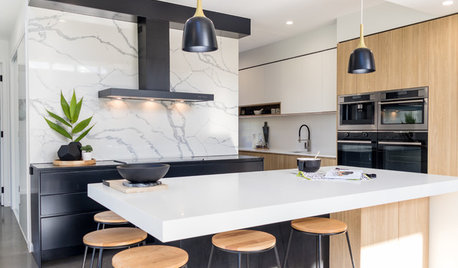
KITCHEN DESIGNHow to Get Your Range Hood Right
Get a handle on the technical specs, and then learn about fun design options for creating a beautiful kitchen feature
Full Story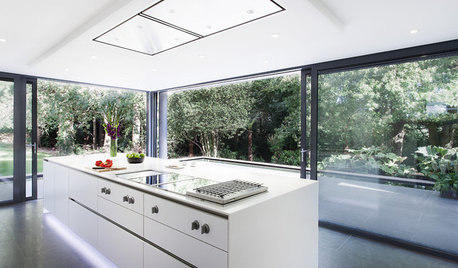
KITCHEN APPLIANCESDisappearing Range Hoods: A New Trend?
Concealed exhaust fans cut visual clutter in the kitchen
Full Story
KITCHEN APPLIANCESWhat to Consider When Adding a Range Hood
Get to know the types, styles and why you may want to skip a hood altogether
Full Story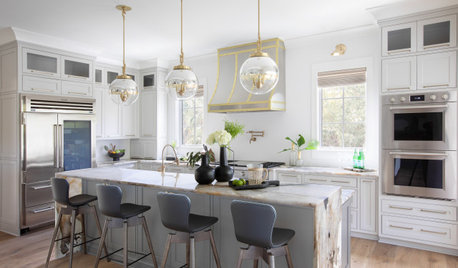
KITCHEN DESIGNDesigner Tips for Range Hoods, Appliances and Lighting
Learn how to get your microwave height just right, what kind of bar stool will be most comfortable and more
Full Story
KITCHEN DESIGNWhat to Know When Choosing a Range Hood
Find out the types of kitchen range hoods available and the options for customized units
Full Story
KITCHEN DESIGNHow to Choose the Right Hood Fan for Your Kitchen
Keep your kitchen clean and your home's air fresh by understanding all the options for ventilating via a hood fan
Full Story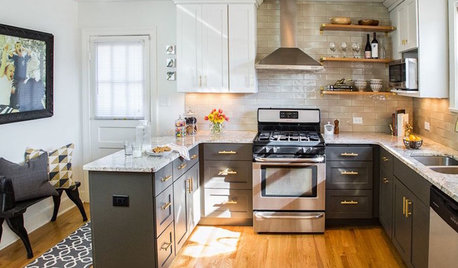
MOST POPULARBefore and After: 13 Dramatic Kitchen Transformations
See the wide range of ways in which homeowners are renovating their kitchens
Full Story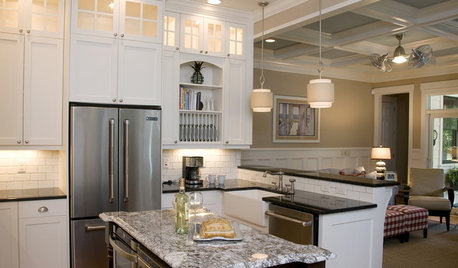
KITCHEN DESIGNStay Cool About Picking the Right Refrigerator
If all the options for refrigeration leave you hot under the collar, this guide to choosing a fridge and freezer will help you chill out
Full Story
KITCHEN DESIGNA Cook’s 6 Tips for Buying Kitchen Appliances
An avid home chef answers tricky questions about choosing the right oven, stovetop, vent hood and more
Full Story
KITCHEN APPLIANCESLove to Cook? You Need a Fan. Find the Right Kind for You
Don't send budget dollars up in smoke when you need new kitchen ventilation. Here are 9 top types to consider
Full Story



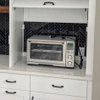
kaseki